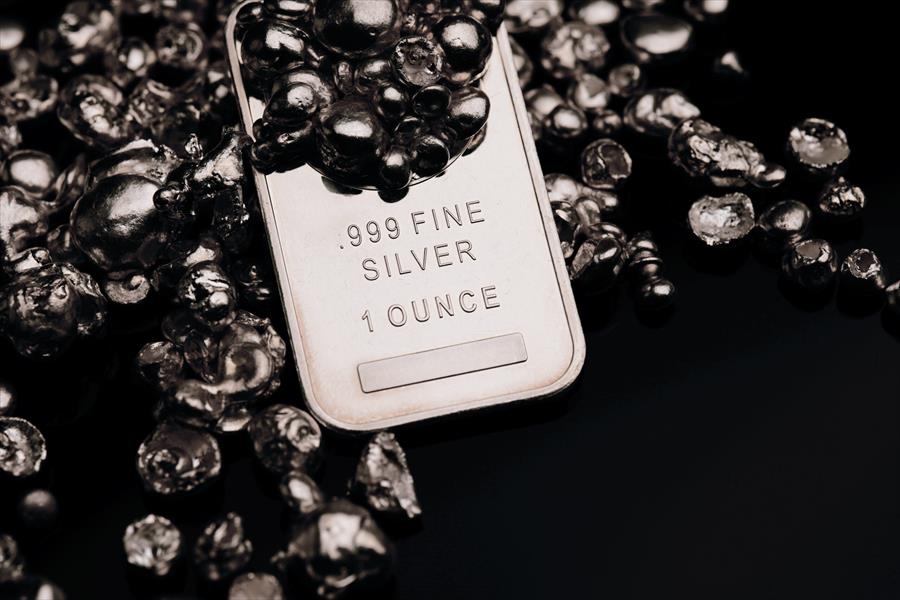Silver’s Potential Surge Navigating the Aftermath of a Dollar Collapse
The US dollar has long been the world’s reserve currency, playing a crucial role in global trade and finance. However, concerns about inflation, mounting national debt, and geopolitical shifts have led some economists and investors to consider the possibility of a dollar collapse. In such a scenario, attention often turns to precious metals, particularly silver, as a potential safe haven. Below, the precious metals experts from First National Bullion and Coin, Carlsbad silver and gold dealers you can rely on for outstanding quality and service, explore the question of how high silver prices could go if the dollar were to collapse.
Understanding the Relationship between Silver & the Dollar
Before discussing potential price scenarios, it’s essential to understand the inverse relationship between silver and the US dollar:
- Store of value – Like gold, silver is often viewed as a hedge against currency devaluation and inflation.
- Increased buying power – A weaker dollar makes silver more affordable for foreign investors, potentially increasing demand.
- Industrial demand – Unlike gold, silver has significant industrial applications, which can drive demand regardless of currency fluctuations.
Historical Precedents: Silver’s Performance during Economic Crises
While a complete dollar collapse would be unprecedented in modern history, examining silver’s performance during past economic crises can provide valuable insights:
- 1970s stagflation – Silver prices rose from around $1.5 per ounce in 1970 to a peak of $49.45 in January of 1980.
- 2008 financial crisis – Silver increased from about $9 per ounce in late 2008 to nearly $50 by April of 2011.
- COVID-19 pandemic – Silver saw a significant uptick, rising from around $12 in March 2020 to over $28 by August of 2020.
These examples demonstrate silver’s potential for substantial price increases during times of economic uncertainty and dollar weakness.
Factors Influencing Silver’s Potential Price in a Dollar Collapse Scenario
Several key factors would likely influence how high silver prices could go in the event of a dollar collapse.
Inflation & Hyperinflation
A collapsing dollar often leads to inflation or hyperinflation, eroding the purchasing power of the currency. In such scenarios, investors typically flock to tangible assets like silver, which can preserve value. Increased demand for silver as a hedge against inflation would likely drive prices higher.
Severity & Speed of the Collapse
The extent and pace of the dollar’s devaluation would play a crucial role. A gradual decline might result in a steady rise in silver prices, while a sudden catastrophic collapse could trigger a rapid and extreme price spike.
Global Economic Conditions
The state of the global economy at the time of a dollar collapse would impact silver demand. A worldwide recession might temper industrial demand, potentially limiting price increases, while a booming global economy could amplify silver’s rise.
Investor Sentiment & Panic Buying
Fear and uncertainty could drive massive inflows into silver as investors seek safe-haven assets. This could lead to a self-reinforcing cycle of price increases, potentially pushing silver to unprecedented heights.
Government & Central Bank Responses
Policy responses to a dollar collapse, such as capital controls, attempts to stabilize the currency, or the introduction of a new monetary system, could significantly affect silver’s price trajectory.
Supply Constraints
A sudden surge in demand could quickly outpace silver supply, potentially leading to dramatic price increases. The limited above-ground supply of silver compared to gold could exacerbate this effect.
Technological Developments
Advancements in technology could either increase industrial demand for silver (e.g., in solar panels or electronics) or decrease it (through the development of alternatives), impacting its price potential.
Expert Predictions & Analyses
While predicting exact prices is impossible, various experts and analysts have offered their views on silver’s potential in extreme economic scenarios:
- Conservative estimates – Some analysts suggest silver could reach $100 to $250 per ounce in a severe dollar crisis, representing a 300 percent to 900 percent increase from current prices.
- Bullish projections – More optimistic predictions range from $500 to $1,000 per ounce, based on silver’s historical price ratios to gold and its potential role as a monetary metal in a post-dollar world.
- Extreme scenarios – A few commentators have even suggested the possibility of silver reaching several thousand dollars per ounce in a complete monetary system reset, though such predictions are highly speculative.
Potential Roadblocks to Silver’s Rise
While the conditions of a dollar collapse could be highly favorable for silver, several factors could potentially limit its ascent:
- Government intervention – Historical precedents, such as the 1934 Silver Purchase Act in the US, show that governments may intervene in precious metals markets during times of crisis.
- Competing safe havens – Other assets, such as gold, real estate, or even cryptocurrencies, might attract investor capital that would otherwise flow into silver.
- Industrial demand fluctuations – Economic turmoil following a dollar collapse could reduce industrial demand for silver, potentially offsetting some of the investment demand.
The Gold-Silver Ratio: A Key Indicator
The gold-silver ratio, which measures how many ounces of silver it takes to buy one ounce of gold, could provide insights into silver’s potential in a dollar collapse scenario:
- Historical average – The ratio has averaged around 60:1 over the past century.
- Recent highs – During the COVID-19 pandemic, the ratio reached a high of 123:1.
- Potential reversion – Some analysts argue that in a severe crisis, the ratio could revert to its historical average or even approach the natural occurrence ratio of 15:1, which could imply significant outperformance of silver relative to gold.
Preparing for the Possibility: Investor Considerations
For those considering silver as a hedge against a potential dollar collapse, several points are worth considering:
- Diversification – While silver may offer protection, a well-diversified portfolio is crucial for managing risk across various economic scenarios.
- Physical vs. paper silver – In a severe crisis, physical silver may be preferable to paper assets like ETFs or futures contracts.
- Storage and security – Significant investments in physical silver require careful consideration of secure storage options.
- Liquidity concerns – In times of extreme economic stress, converting large amounts of silver into other assets or currencies may be challenging.
- Tax implications – Potential gains from silver investments could be subject to significant taxes, which should be factored into investment decisions.
Silver’s Potential in a Dollar Collapse Scenario
While it’s impossible to predict with certainty how high silver might go in the event of a dollar collapse, historical precedents and fundamental factors suggest the potential for significant price increases. Conservative estimates point to possibilities in the hundreds of dollars per ounce, while more bullish projections envision silver reaching $1,000 or more.
However, it’s crucial to approach such scenarios with caution. A dollar collapse would likely coincide with broader economic and social upheaval, making it difficult to realize gains or convert silver into usable assets. Additionally, government interventions and unforeseen economic factors could significantly impact silver’s performance.
Ultimately, while silver may offer a potential hedge against severe economic crises, it should be considered as part of a broader investment strategy. As with any investment decision, thorough research and consultation with financial advisors are recommended before making significant allocations to silver or any other asset.
In a world of economic uncertainty, silver’s dual role as both an industrial metal and a store of value makes it a compelling option for investors seeking to protect their wealth. However, the path to potential astronomical prices in a dollar collapse scenario is fraught with complexities and risks that must be carefully navigated.
Whether you’re a veteran precious metals collector or you’re looking to diversify your portfolio as a hedge against economic crises, reach out to the experts at First National Bullion. We offer a huge selection of gold, platinum, and silver bars. Carlsbad collectors who are looking for the finest-quality coins, bars, and bullion should give us a call to speak with one of our precious metals experts.
The statements made in this blog are opinions, and past performance is not indicative of future returns. Precious metals, like all investments, carry risk. Precious metals and coins may appreciate, depreciate, or stay the same in cash value depending on a variety of factors. First National Bullion does not guarantee, and its website and employees make no representation, that any metals for sale will appreciate sufficiently to earn the customers a profit. The decision to buy, sell, or borrow precious metals and which precious metals to purchase, borrow, or sell are made at the customer’s sole discretion.


